This article was sent on Tuesday to subscribers of The Mail, Motherboard’s pop-up newsletter about the USPS, election security, and democracy. Subscribe to get the next edition before it is published here, as well as exclusive articles and the paid zine.
For those of you who signed up for the paid tier, your zines are on the way! We sent them all out over the weekend. We hope you enjoy them! We've already started work on Issue #2 and will provide updates as it comes together.
If you heard anything in the news about the post office before July, it was probably Donald Trump talking about how Amazon was ripping the USPS off. He's been saying this for years, that internet shipping companies are paying too little per package and the USPS should quadruple rates for Amazon so it stops losing money.
Aside from the fact that Trump is probably the last person anyone should be listening to for financial advice, he gets this argument very wrong. In fact, it is Congress that is to blame for the vast majority of the USPS's paper losses. "The Postal Service has lost billions of dollars a year for many years,” Trump said back in April. “I’ll tell you who’s the demise of the Postal Service...Amazon or these other internet companies.”
That's completely backwards. The rise of e-commerce has, if anything, delayed an entirely artificial financial disaster Congress could fix any time it wants. But it's been difficult to refute this narrative beyond broad generalities because the USPS has kept details of its relationship with Amazon secret.
But, last week, government transparency group American Oversight released a treasure trove of documents it got via a Freedom of Information Act request from the USPS which shed new light on USPS finances and its relationship with Amazon. While it didn't disclose the exact rates Amazon pays, it included presentations USPS created in April about its latest round of negotiations not just with Amazon but all the major private carriers, such as FedEx and UPS, as well as big-box retailers increasing their e-commerce offerings like Walmart and Target.
While the documents are not a neutral third-party report, they are USPS management's most detailed argument yet for why Trump and other USPS critics are wrong that the post office acts irrationally towards Bezos, Amazon, and other online retailers.
I think this argument is worth going into, not because I have a particularly strong opinion on what rates USPS should be offering to its biggest customers, but because it inadvertently makes a powerful argument for why a public post is a societal good. But to get there, I'm going to have to lay some groundwork about how this stuff works, so please bear with me.
There are two different ways to send packages through the post office. There is the way those of us who send a package every once in a while use, where we go to the post office, give them the package, and the package goes through the post office (or one of its various trucking and warehouse contractors) all the way to the delivery destination. When you buy First Class or Priority postage, this is what you're getting. This method is profitable for the USPS, netting $4.1 billion in profit last year.
The second kind of package service USPS offers is a partnership with other shippers or retailers called Parcel Select where USPS serves as the last-mile deliverer. These are the packages that private shippers have determined are not profitable for them to deliver or don't have the infrastructure to do themselves. More recently as the number of packages have skyrocketed, companies like UPS and Amazon use Parcel Select to offload the packages they don't have the capacity to deliver onto the post office.
With Parcel Select, companies bring their packages to either a USPS distribution facility or a post office and the USPS takes it from there. Shipping companies like DHL and UPS use Parcel Select as well as retailers like Walmart and CVS (UPS will sometimes tell you a package was shipped via "UPS SurePost," which is their Parcel Select product). This arrangement is also profitable for USPS; the post office made $3.3 billion off Parcel Select last year.
These Parcel Select deals can be controversial, though, because the USPS offers discounts to those customers because they're the post office's biggest clients and are doing some of the work themselves. Offering discounts to bulk mailers is hardly new or specific to packages. The USPS also offers lots of discounts on paper mail too, and the proliferation of third-party postage providers like Stamps.com, Shippo, etc. have made tracking who is and isn't applicable for those discounts more difficult and potentially bad for the USPS's bottom line.
From the post office's perspective, these discounts make sense. As a matter of course, companies will offer discounts to their biggest and best customers especially when there are competitors lurking. None of this is strange or unique to the shipping industry.
To be perfectly honest, I'm not 100 percent sure what the argument against these deals are. I've heard them, but I struggle to regurgitate them in a manner that doesn't make them sound absurd. So far as I can tell, the criticism stems from the fact that the biggest of Parcel Select shippers is Amazon, which is owned by Jeff Bezos, who also owns the Washington Post, whose articles Donald Trump doesn't like. More broadly, there are good arguments that Amazon getting cheaper postage undercuts small businesses, giving Amazon an unfair competitive advantage that is bad for society in general. But this is not something USPS management can fix without a fundamental restructuring of what the USPS is and how it is funded.
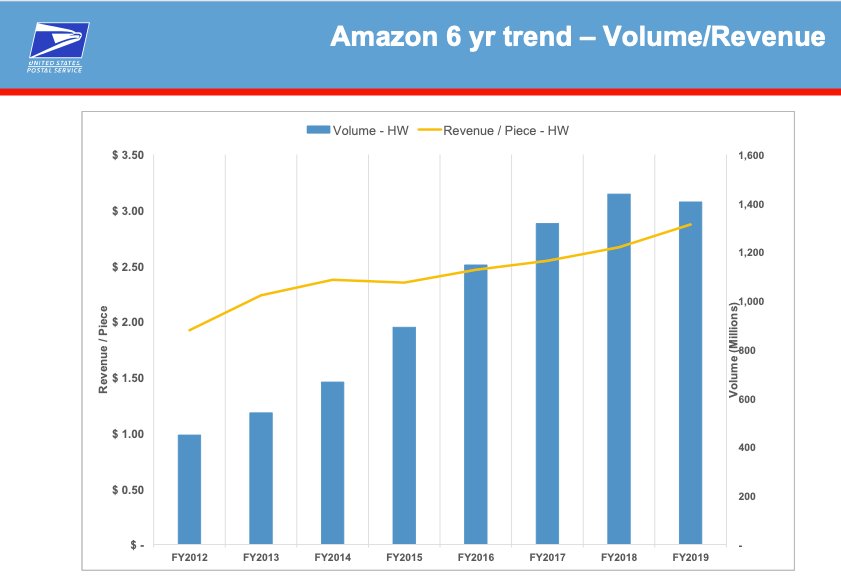
In any event, the important thing to know about Parcel Select is even with these lower negotiated prices, the USPS says "Every Parcel Select relationship is profitable." In fact, most packages pay for themselves, the USPS says, "by 1.5 to 2 times."
Which brings us, finally, to Trump's suggestion—later channeled through the Treasury Department and now Postmaster General Louis DeJoy—that USPS raise postage rates by many orders of magnitude, especially for Amazon.
This would be a very bad idea for everyone but the USPS's competitors. On the most basic level, jacking up rates on a profitable service just because you're losing money for other, unrelated reasons is bound to backfire. On top of that, Amazon, UPS, and FedEx are increasingly elbowing their way into the last mile delivery space. All of them have stepped up those efforts in the wake of the pandemic's skyrocketing e-commerce usage, putting increasing pressure on USPS to stay competitive (something that DeJoy's policies tanking delivery reliability have not helped). Jacking up rates on an already profitable product for which there are competitors increasingly elbowing their way into your line of business is especially silly and bound to backfire.
The USPS documents pretty much say this straight away:
If USPS were to raise Parcel Select prices by anywhere from 0.5-4 times current published pricing, we would rapidly price ourselves “out of the market.” Management has assessed that the entire $3.3B of annual contribution would be at risk.
In management speak, this is the politest way possible of saying "what the fuck are you thinking?"
In particular, USPS management highlighted the disproportionate impact this would have on companies that ship medicine like the Department of Veterans Affairs, Walgreens, and ExpressScripts. Jacking up shipping rates for medicine during a global pandemic would not only be a bad look, but a self-defeating proposition that would only drive business away from the post office.
Of course, the USPS determines these negotiated service agreements on a company-by-company basis. In theory, it could play a hard line with Amazon while being more competitive with others. But this, too, would be a bad strategy for the USPS, the presentation outlines, because it'd lose a ton of money.
Since 2017, Amazon has shipped an increasing share of its own packages, and that increasing share has cut into USPS's share of Amazon's overall package load. Here's a chart from the USPS documents:
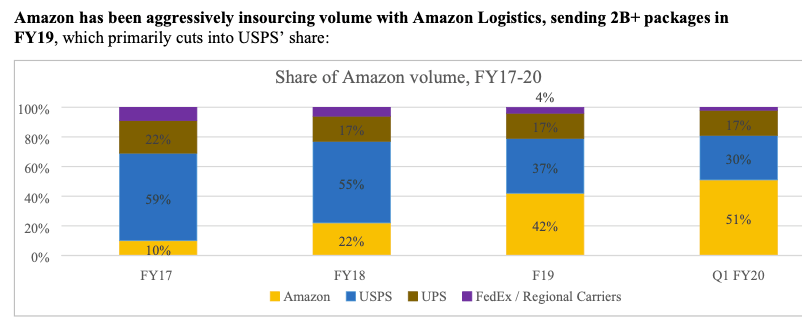
USPS shipped 59 percent of Amazon's packages in 2017, but now ships only 30 percent. Meanwhile Amazon has more than quintupled the number of packages it handles itself, from 10 percent to 51 percent in that same time span. Other carriers like UPS haven't been nearly as impacted. The story is quite clear: Amazon is ramping up its own delivery network at the expense of USPS's share.
From Amazon's perspective, this gives the company better bargaining power when negotiating with the USPS while allowing more operational flexibility for its ever-growing e-commerce business. But even so, Amazon is still USPS's biggest and most profitable customer. Amazon generated $1.3 billion in profit for the USPS in 2019. According to the USPS documents, that's "more contribution than any other customer by almost 2 times." (Bold in original.)
Although the USPS documents don't quite come out and say this, the strong implication is that USPS management believes Amazon still wants to work with the USPS and use it for local delivery despite the growth in its own delivery network. Whether or not that's Amazon's long-term vision, the point USPS wants to make is that companies prioritize certainty and reliability. With Trump spewing off nonsense about package rates and more recently DeJoy's drastic changes to service standards, the USPS is delivering neither.
To be sure, there are some customers in rural areas Amazon, UPS, and FedEx will never reach because it would never be profitable. But USPS estimates that, for Amazon, those rural deliveries amount to only about 6-7 percent of current package volume. Everything else is potentially up for cannibalization now or in the near future should prices drastically increase.
The bigger picture here is that if the USPS were to raise rates, this would impact not just the big customers who currently use USPS, but anyone who ships packages or pays for shipping of packages. Thanks to the universal service mandate and the Postal Regulatory Commission's role in making sure USPS doesn't charge unaffordable or unreasonable rates, USPS plays an important role holding shipping costs down. For the same reason USPS can't jack up Amazon rates much higher than other carriers offer, so too are other carriers limited in how much they can charge for packages thanks to USPS's affordable rates.
Sometimes, UPS or FedEx will charge many times what USPS does to ship the same package. When they do this, they are telling customers they don't want to ship that package because it's not worth it for them. They are basically saying go to the post office. I've heard from many small business owners who ship with the post office for this reason.
I said earlier that the documents quietly make a powerful argument in favor of a robust, healthy public post, and we are finally getting to the point. If the USPS jacked up rates, it would change the whole ballgame, USPS management argued. If USPS raised package rates anywhere from 50 percent to 400 percent, this would result in:
Loss of USPS as the price anchor in the market for all business and all consumers. Rural Americans would likely absorb the greatest price increases.
Basically, USPS management is saying they're playing a pivotal role in holding down shipping costs. If USPS didn't hold down package costs—or act as a "price anchor"—UPS and FedEx would be released to float them ever upwards while Amazon would continue to expand its own network. Of course, rural Americans, the people who typically rely on the post office more than anyone, would suffer the most.
This Week In Mail
Mail-in-Voting News
- The USPS seems to have forgotten to update its change of address system the month before election officials around the country were to mail out ballots. That's a big deal potentially affecting millions of ballots.
- Black voters have their mail-in ballots rejected at twice the rate as white ones in North Carolina, a ProPublica analysis found.
General USPS News
- Thanks in large part to the federal judges who are making them, the USPS is rolling back all the bad things DeJoy has done.
- The USPS has officially blamed lower level managers for the mail delays for mis-interpreting USPS policy, but new documents further undermine that case, not that there was much of one to begin with.
Postcards
I didn't go to the office to pick up postcards last week because other stuff came up. But there are so many from previous weeks I haven't posted yet. I'll go in this week, so keep 'em coming.
Our address is:
VICE Media c/o Aaron Gordon
49 S 2nd St.
Brooklyn, NY 11211

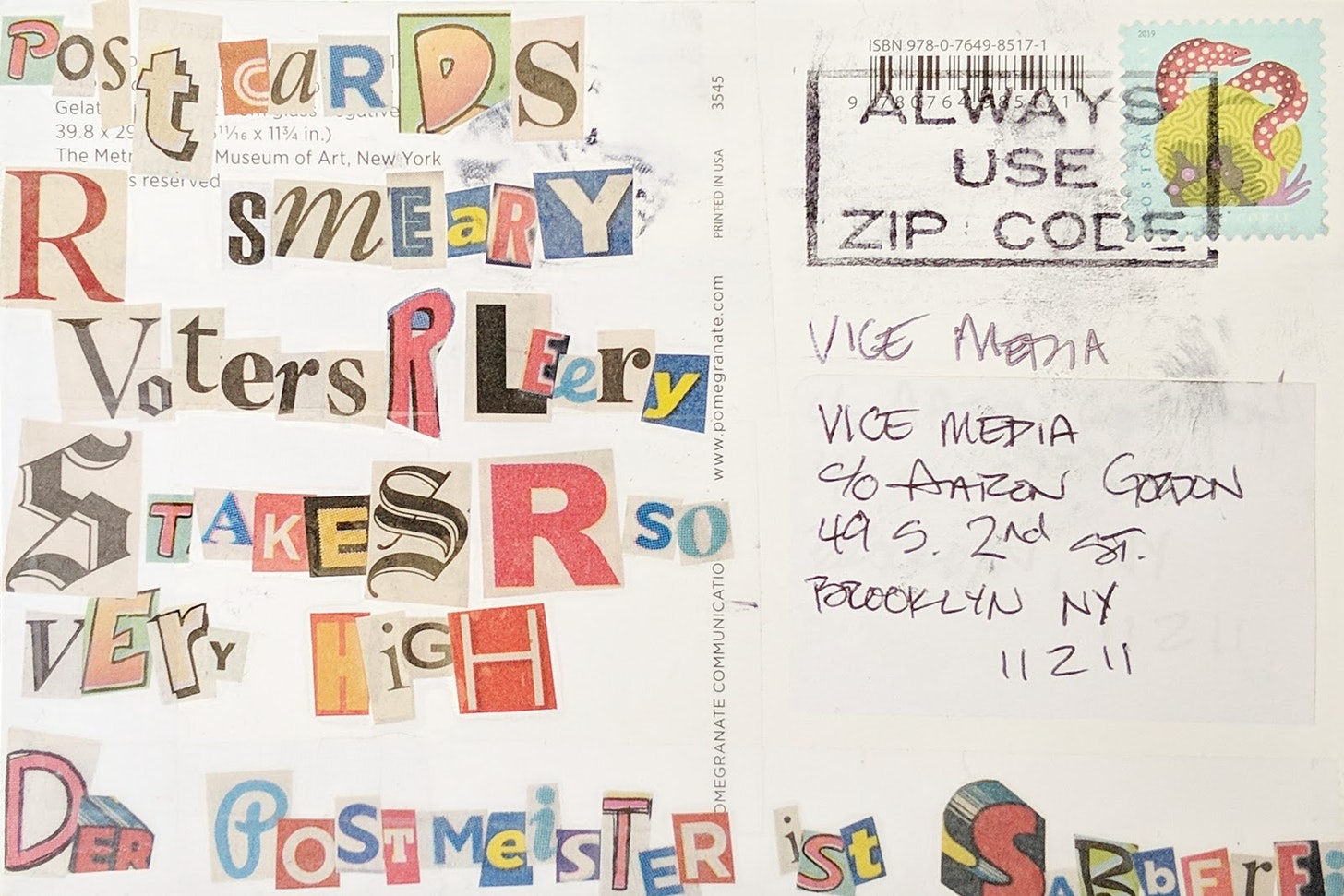
Not sure how I feel about the serial killer-style cut out letters, to be honest.


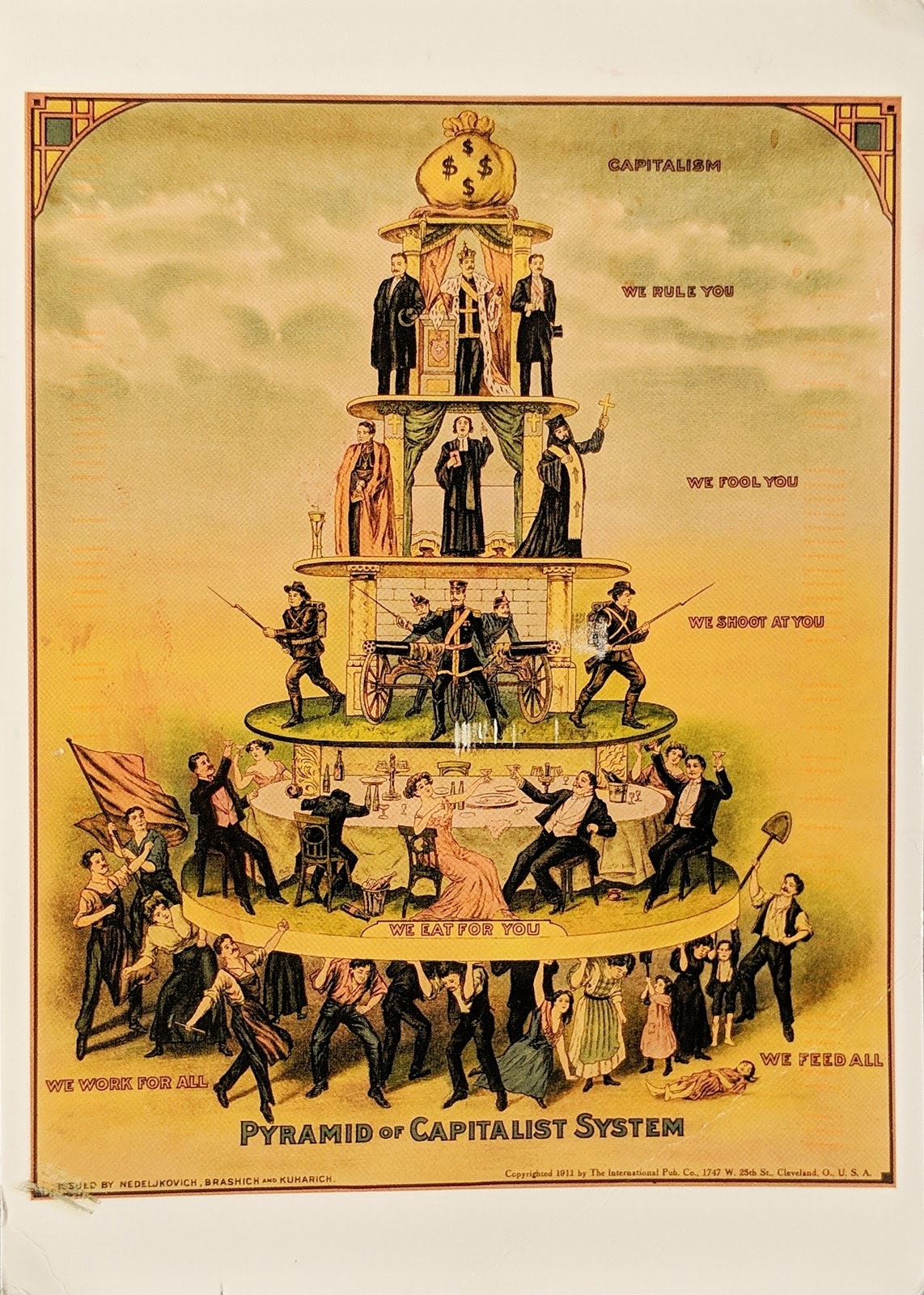
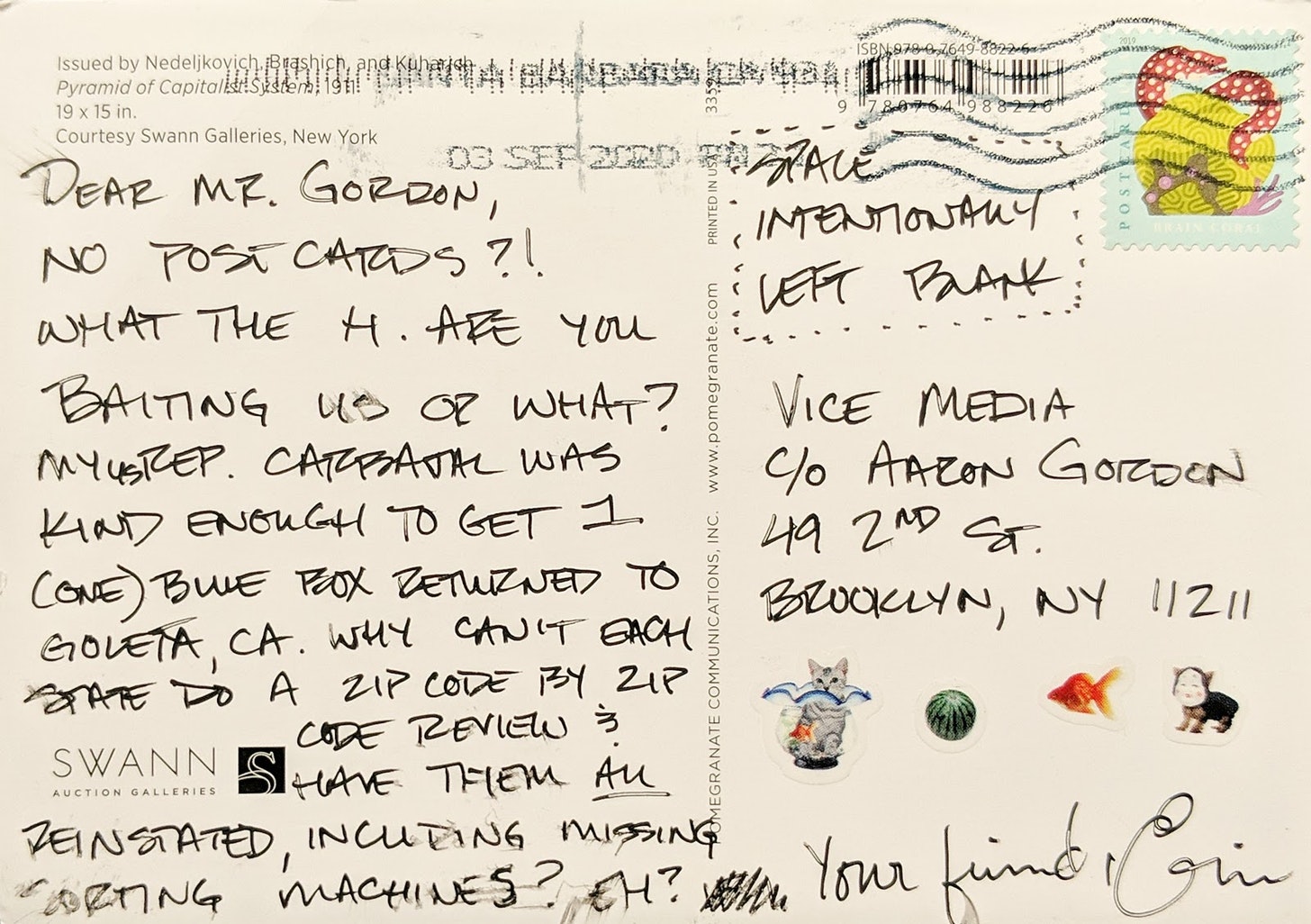
Wash hands
Wear masks
Write letters
Aaron
Subscribe to The Mail, Motherboard’s newsletter about the USPS, voting security, and democracy.
from VICE US https://ift.tt/36td7nr
via cheap web hosting
No comments:
Post a Comment